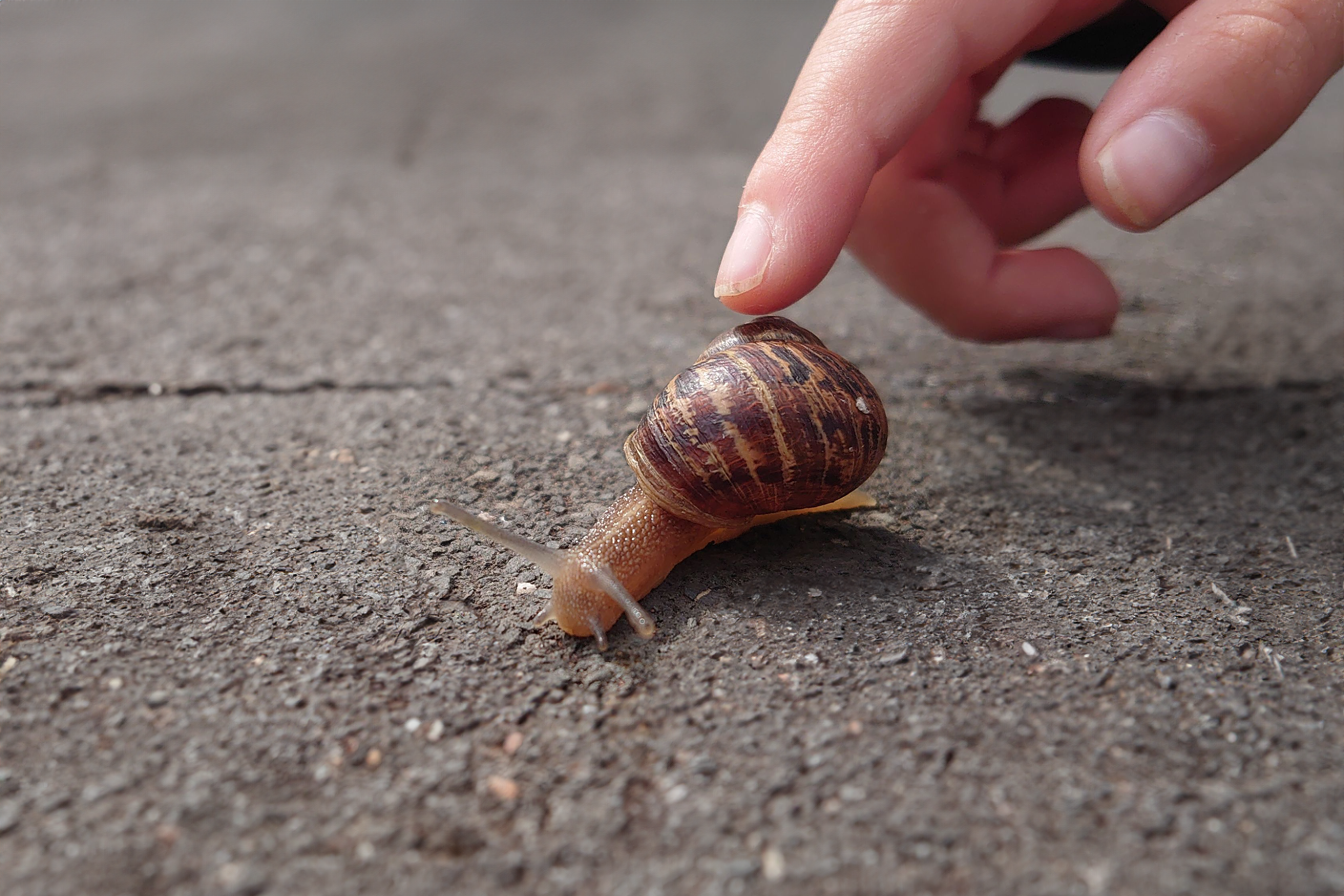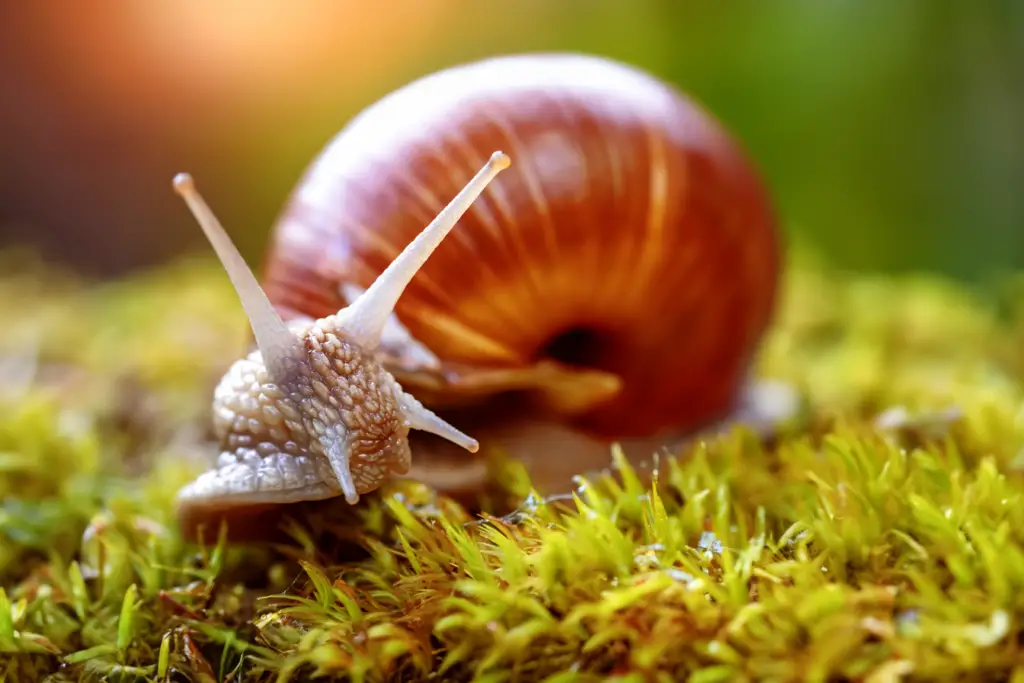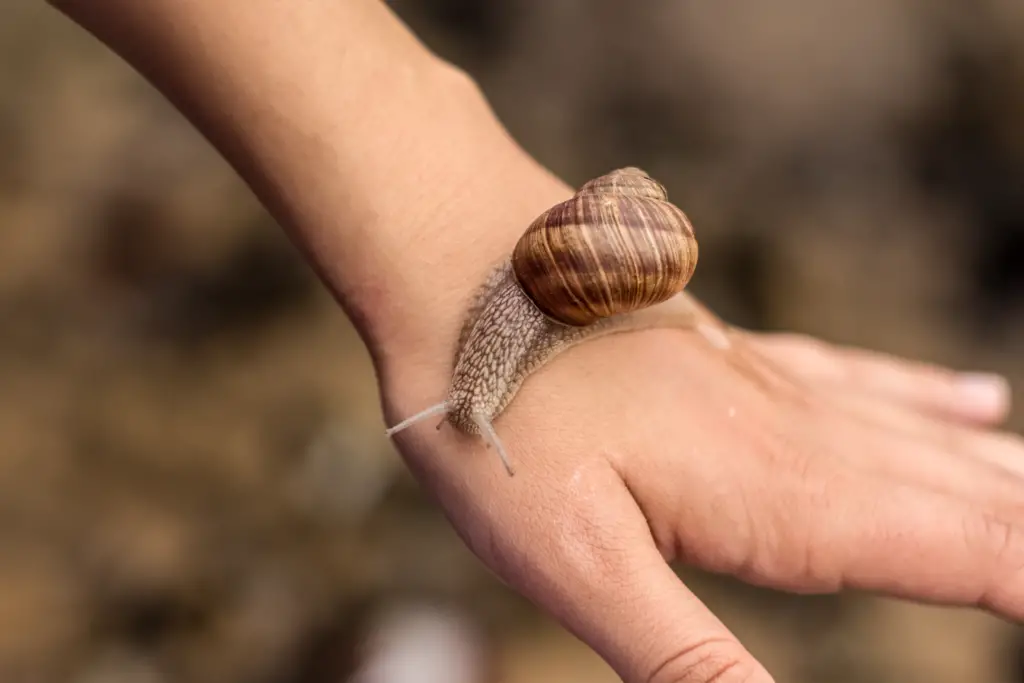
Imagine watching a snail journey across a garden path—it’s a slow and methodical process, but have you ever wondered just how these small creatures move? Snails are fascinating invertebrates with a unique form of locomotion. They glide along on their muscular foot, employing a set of motions and biological adaptations that allow them to navigate their environment, albeit at a leisurely pace.
To understand snail movement, you need to get up close and personal with their anatomy. Snails possess a flat, muscular organ called a foot, which undergoes continuous waves of contractions. These muscular contractions generate motion, similar to a slow ripple, enabling them to inch forward on a variety of surfaces. What’s more interesting is that the snail’s foot secretes a slimy mucus that serves a dual purpose. Not only does it reduce friction, making their movement smoother, but it also helps to protect their soft underside from rough terrain.
Moreover, this snail mucus possesses adhesive properties, ensuring that they can adhere to even the most vertical of surfaces without falling off. Whether navigating a backyard or navigating your window pane, snails bring a unique approach to movement within the animal kingdom. Understanding how snails move not only piques our curiosity but also offers insights into the diverse strategies evolved by animals to adapt to their surroundings.
Anatomy of Snail Locomotion
In your journey to understand how snails glide across surfaces, it’s essential to dive into their locomotive anatomy. You’ll see that it’s their muscular foot and unique mucus production that work in tandem to make movement possible.
Foot Muscle Structure
The foot of a snail is the powerhouse of its movement, consisting of a dense network of muscles. These muscles are divided into two main groups: longitudinal and circular. The longitudinal muscles contract sequentially from the rear to the front, creating waves along the foot’s underside. This wave-like motion, known as pedal waves, helps propel the snail forward. On the other hand, the circular muscles help the snail to grip surfaces and change directions. These muscles’ coordinated action converts into the smooth, gliding motion you observe.
Mucus Secretion
The mucus that a snail secretes plays a crucial role in locomotion. It’s a special slime that the snail produces, which reduces friction against the surface they are moving over. However, it’s not just about slickness; this mucus also serves as a protective layer to prevent their soft body from being hurt by the rough terrain. The snail’s gland cells secrete this mucus directly onto the path ahead, facilitating a more effortless movement and protecting its foot during the crawling process.
Locomotive Mechanics
Snail movement is a fascinating blend of simplicity and complexity, involving a harmonious interaction between muscular contractions and a unique adaptation to reduce friction. Here’s how they achieve their slow yet effective locomotion.
Muscular Wave Movements
Your garden snail propels itself by generating muscular wave movements along its foot. This is initiated from the rear and travels to the front, creating a sequential pattern of contraction and relaxation. These movements are intricate, with a complexity in the snail’s muscle activity that’s crucial for progress. It’s an efficient way to move, and surprising when you consider the snail’s reputation for being slow.
Propulsion and Friction
For efficient movement, snails need to overcome the friction between their body and the ground. They achieve this by producing a special slime that reduces friction and allows them to glide forward. This mucus is not just a slimy trail but an integral part of their locomotion, minimizing damage to their body and enhancing their ability to stick and move across various surfaces.
Environmental Influence on Movement
When you watch a snail move, you might not realize how much its environment affects its locomotion. Let’s explore the specific ways surface textures and varying hydration levels play a role in how a snail gets around.
Surface Textures and Slopes
Surface Textures: The type of surface you find a snail on greatly impacts its speed and ability to move. Snails prefer smooth surfaces that allow their muscular foot to create a steady, rippling propulsion. Rough, irregular surfaces can slow them down significantly. According to an article on snails’ locomotion, the slime they secrete aids in reducing friction, enabling them to move more efficiently on various textures.
Slopes: The incline of a surface presents a challenge for a snail. On an inclined plane, a snail’s pace depends on both the steepness of the slope and the snail’s own physical capabilities. As highlighted in a piece discussing snail movement, snails can move on inclines, but their speed may reduce as the angle of the slope increases.
Hydration and Snail Mobility
Hydration is crucial for snails. Their mucus is essential not only for protection but also for locomotion. In drier environments, snails must produce more mucus to avoid dehydration, which can take a toll on their energy reserves and slow their movement. That’s why you often notice more active snails during or after a rain. The moisture in the air and on surfaces aids in their movement, as less mucus is required for them to travel.
Frequently Asked Questions
In this section, you’ll find clear answers to some common questions about the fascinating movement of snails.
What is the unique method of locomotion used by snails?
Snails engage in a gliding movement through the rhythmic contraction and relaxation of their foot muscles, which, along with the secretion of mucus, propels them forward in a smooth motion. Learn more about snail locomotion from Crawling to a Different Beat: How Do Snails Move?
Can you explain snail mobility in a way that is understandable to children?
Think of a snail as having a single, big muscle called a foot which it squishes up and stretches out to wiggle forward slowly. This wiggling motion, along with a slippery trail of slime, is how a snail crawls along.
What aids snails in moving from one place to another?
Snails create mucus, a slimy substance, that reduces friction against the surface, making it easier to crawl without hurting their soft body.
Do snails exhibit different movement patterns in aquatic environments?
Yes, aquatic snails adjust their movement by using their muscular foot to push against the water, which is a different challenge compared to moving on solid ground. More on the movement of aquatic snails here.
What similarities exist between how snails and slugs move?
Snails and slugs both move by contracting and expanding their muscular foot in a wave-like pattern, and they both secrete mucus which helps them slide over surfaces.
What is the term for the muscular structure snails use to get around?
The muscular structure snails use to move is called the “foot”, which is strong and flexible, allowing the snail to navigate its environment.
Driven by a passion for those tiny creatures that rule our world, we at Bug Domain strive to be your go-to resource for information on insects.



